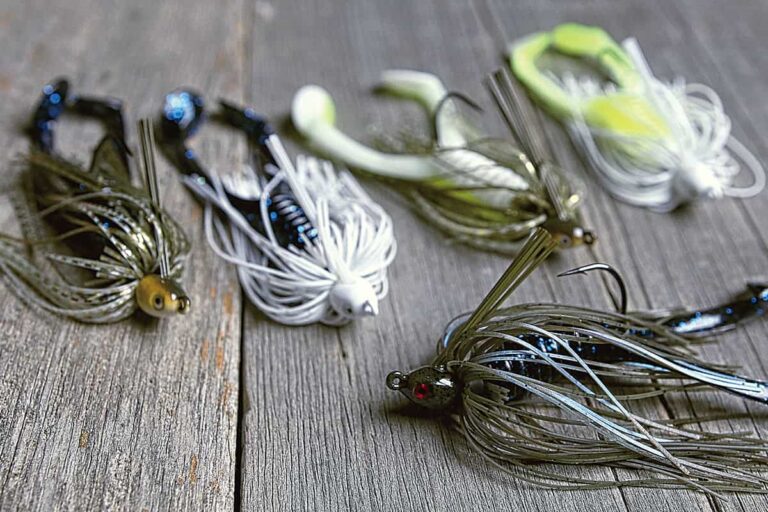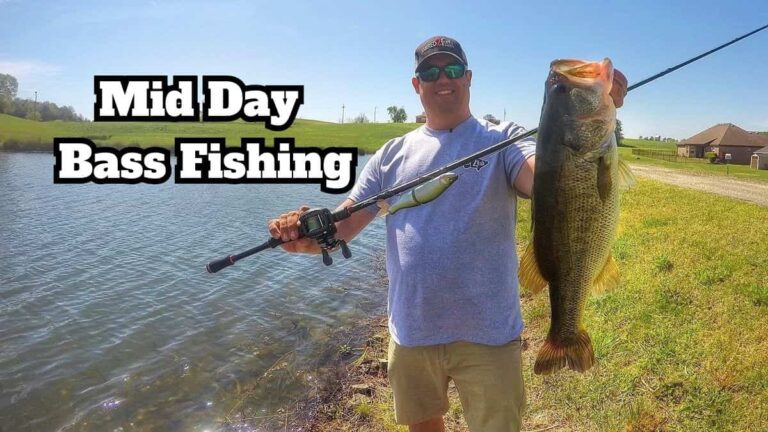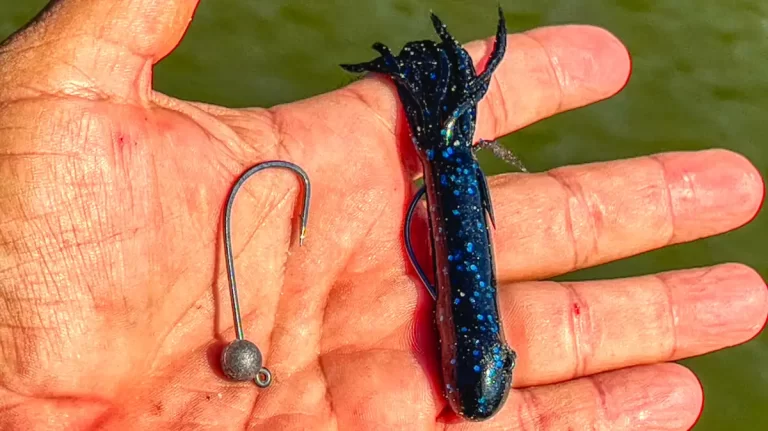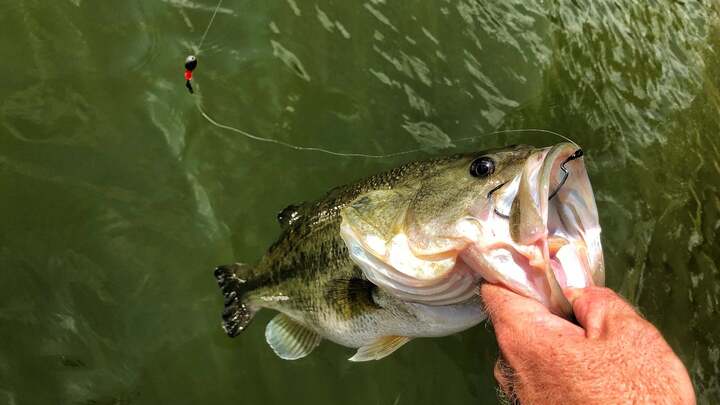What Do Bass Eat in the Winter? Cold Water Bass Forage
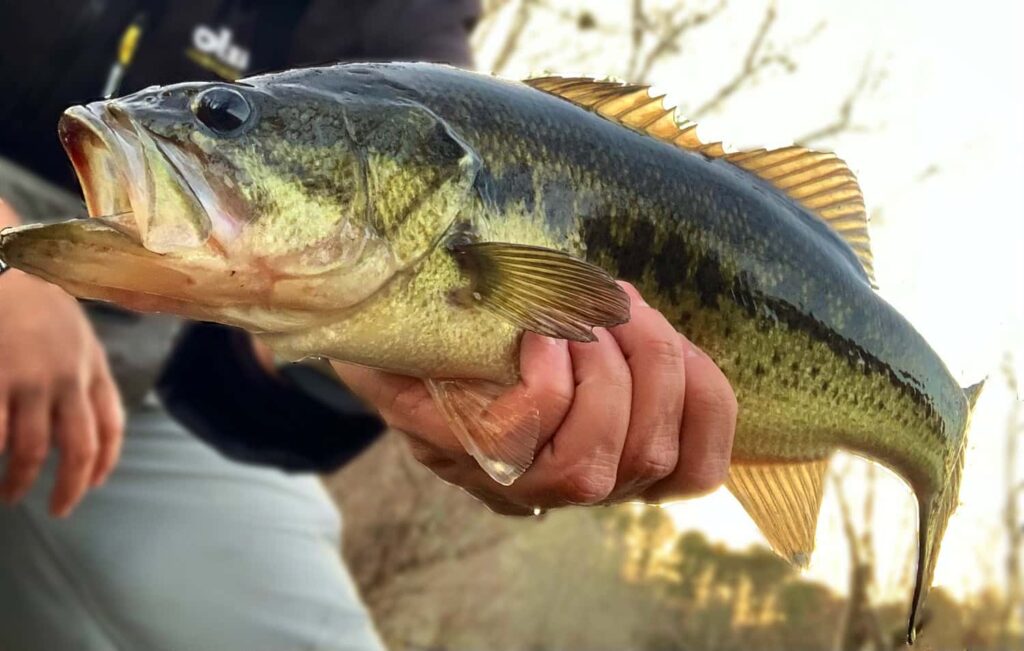
Winter bass fishing can be very difficult. Bass are more finicky and picky than ever.
It is vital that you know exactly what bass are eating so that you can match the hatch as closely as possible.
So the question is, what do bass eat in the winter?
Also Read: What Do Bass Do In the Winter?
Do Bass Stop Biting in the Winter?
No, bass never stop biting and eating.
It is true that their metabolism slows down quite a bit during the winter, but they are not hibernating, so they still need to eat in order to survive.
In fact, bass will never go more than a day without eating even in the cold winter.
What Do Bass Eat in the Winter?
Bass will primarily eat baitfish during the winter months. In large lake systems, shad will be the main baitfish and forage of bass.
In small ponds without shad, bluegill and other, smaller bass will be the main forage.
Many ponds do have shad in them. In these types of ponds, shad, bluegill, and small bass will be fairly balanced parts of a bass’s diet.
After baitfish, crawfish will be the secondary forage for winter bass.
Pretty much every body of water from great lakes to small ponds will have crawfish. So bass will always be eating crawfish.
Easy Prey
Like I said, bass do have slower metabolisms during the winter.
This doesn’t mean they never swim quickly or chase after prey, but they would rather not if they don’t have to. So bass target easy prey.
What is easy prey? Dead or dying prey are the easy targets that bass hone in on.
The cold temperatures are especially hard on small baitfish. Many of them die out when water temperatures get very low.
Their small bodies just aren’t strong enough to withstand the harsh cold.
This makes them primary targets for sluggish bass. Even crawfish become easier targets when it is cold.
Many will also die out, but all crawfish will move slower and will not have as good defenses against bass.
What Do Bass NOT Eat in the Winter?
The winter heavily restricts what bass are able to eat. Forage such as frogs, lizards, bugs, rodents, and other creatures just aren’t available.
These creatures either die out, migrate, or hibernate before the winter rolls through.
Rather than looking all around for forage that isn’t there, bass hyper focus on the small amount of prey that is around them. Baitfish and crawfish.
Best Lures for Winter Bass Fishing
Now that you know what winter bass are eating, the next step is to match the hatch.
These baits have proved to work the best and get the most bites from winter bass.
Also Read: Best Lure Colors for Winter Bass Fishing
1. Lipless Crankbait
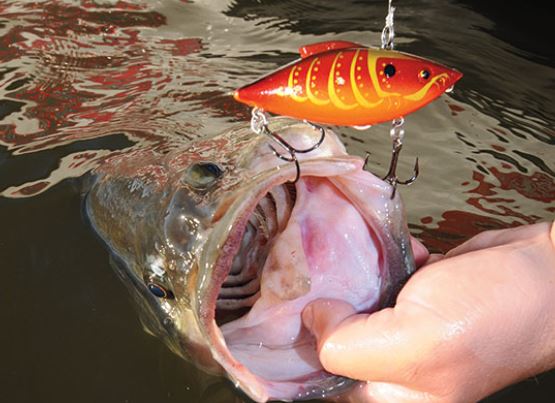
Lipless crankbaits are most popular for pre-spawn and fall bass fishing, but they catch tons of winter pond bass.
The difference compared to those other seasons is the way you fish the bait in the winter.
When the fish have slow metabolisms and aren’t willing to exert energy chasing after prey, you need to make it easy for them.
Yo-Yo fishing a lipless crankbait catches tons of cold water bass.
The Yo-Yo technique is essentially letting the bait sink to the bottom and then ripping it up, and then letting it sink again.
Rip the lipless crankbait a couple feet off the bottom and then let it flutter back down.
This mimics a dying baitfish making its last attempt of swimming around.
The Yo-Yo technique a very popular way of fishing big flutter spoons out in very deep, winter water.
But these spoons don’t work great for winter pond and bank fishing. Lipless crankbaits work much better in the shallower water.
2. Jerkbait
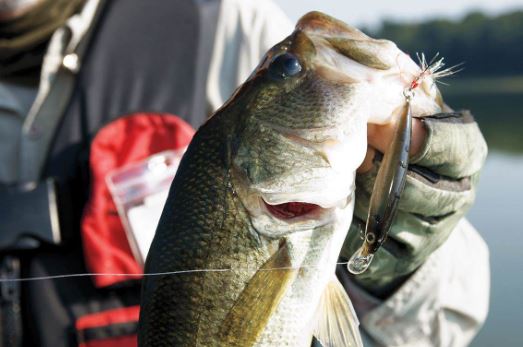
Specifically, suspending jerkbaits are the favorite winter lure of most bass fisherman.
These lures can be fished very slowly because of the suspending nature. In very cold water, I will often pause the jerkbait for up to 10 seconds in between jerks.
Jerkbaits also have very realistic shapes, patterns, and actions which persuade many bass into striking.
I will admit, because of how you retrieve jerkbaits, they can be very boring to fish.
But they produce tons of fish, so as long as you can be patient, it is hard to beat a suspending jerkbait in winter ponds.
3. Drop Shot
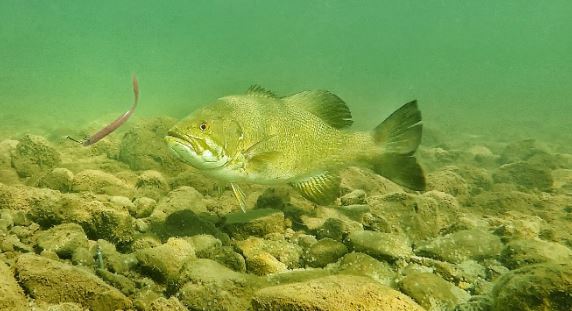
Cold water bass can be very finicky. Sometimes you need a finesse approach to entice them into biting.
The drop shot is one of the most visually appealing presentations you could possibly throw.
The drop shot allows you to hover a soft plastic about a foot off the bottom and wiggle it around.
This action is just ridiculous and convinces so many bass to eat. Even bass that aren’t hungry will eat a drop shot.
I mostly use fluke or small swimbait soft plastics to try and imitate dying baitfish.
However, crawfish and worm presentations also work great. If the pond I am fishing has shad, I will fish the fluke or swimbait soft plastics.
But if the pond doesn’t have shad, I will mostly use finesse worms or crawfish baits.
4. Texas Rigged Crawfish
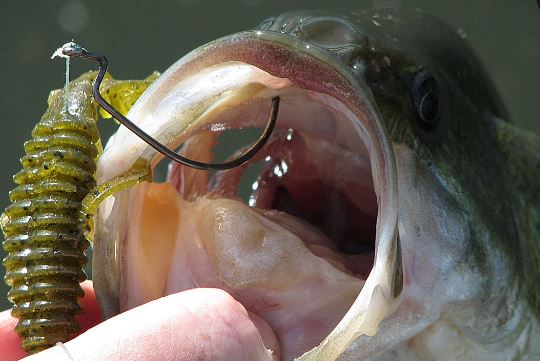
Texas rigging a crawfish soft plastic is my favorite crawfish presentation for the winter.
Many people love throwing jigs as their winter crawfish, but I have found that Texas rigs work better.
One reason for this is that winter bass often bite very softly. Because of the big, thick weed guard on jigs, the hook up ratio on soft bites is not great.
But the hook up ratio from a soft plastic is much higher. You also have the freedom to use whatever soft plastic you want, so you can choose very realistic baits that look exactly like a crawfish crawling on the bottom.
5. Blade Bait
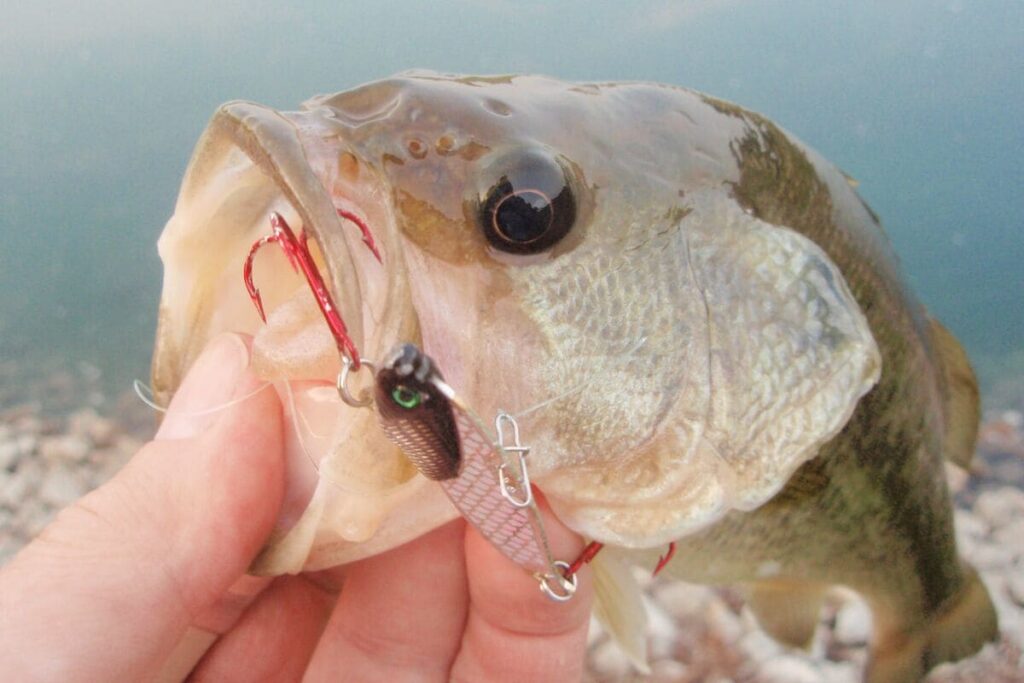
Blade baits have similar profiles and actions as a lipless crankbait. But blade baits are fished very differently.
They are also silent and much slimmer. This gives a more subtle and realistic presentation that works great for cold water bass.
Reeling this In
This upcoming winter, make sure to get out and fish as much as you can.
The cold temperatures scare off most anglers, so you might have the lake to yourself.
Bass are will be eating baitfish and crawfish. So tie on your slow moving baits that match this hatch.
You learn something new and get a little better every time you get out on the water.

